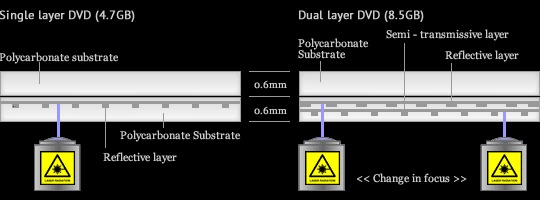

- #Dual layer burner for mac mac os
- #Dual layer burner for mac portable
- #Dual layer burner for mac pro
- #Dual layer burner for mac mac
Even so, the question remains: Should you burn at the maximum speed? Well, if the quality and integrity of the burned media is paramount, the short answer is that you should burn at the slowest speed your device will allow-for most dual layer drives that speed is either 1x or 2x.Īuthoring Dual Layer DVDs in DVD Studio ProĪs with so much of the encoding process, creating a dual-layer disc requires the marriage of science and art, combined with the kind of trial-and-error experience that causes many sleepless nights and gray hairs when a deadline looms. For example, dual-layer might burn at 8x and single-layer at 16x. The speed ratings on dual-layer media are much lower than single layer speed ratings. If you want to find out who makes your favorite brand and how it stacks up to others, check out .įinally, you need to consider burn speed. This is one of those instances where name brands do matter: Verbatim, Sony, Maxell, etc. You may see no-name, non-branded media offered at great prices but if you factor in the "coaster percentage" for inferior media, it most likely will end up costing you more. Even though dual-layer media keeps coming down in price, it's still not cheap enough to waste half a pack on bad burns.Įven with a reliable drive, it's critical to start with good quality media. The drive is reliable and I have found it produces very few coasters. I recommend the Pioneer 111D that can be found as a bare drive or in an external Firewire enclosure. When shopping for a drive you will want to look for dual-layer information in the drive's specs, such as: DVD+/-R/RW, Dual Layer +/-R DL, CDR/RW
#Dual layer burner for mac mac
If your Mac doesn't have an internal drive, it's not a problem as long as you have a Firewire or USB port, because many external drives are available.
#Dual layer burner for mac pro
The new Mac Pros and the very latest MacBook Pro ship with Dual Layer SuperDrives. On DVD-ROMs, jumping from one layer to the other is a non-issue but with DVDs a layer change can cause problems with playback.įirst and foremost, you need to have a drive that's capable of burning dual-layer media. The lasers on both the burners and players have to refocus when switching from the outer to inner layer. The top layer is called Layer 0 and the inner layer is called Layer 1. Dual-layer media is just that: two layers of the recording dye, each backed by a semitransparent metal reflector and separated by a polycarbonate spacer. This article covers the use of dual-layer media for Dual Layer DVDs, as well as using Dual Layer DVD-ROMs for data storage. To ensure proper placement, burn to DVD from within DVDSP. If you format your DVD to an image file and then use either Toast or Disk Utility to burn the DVD your break point will be arbitrarily set because those utilities cannot read the Layout File created by DVDSP during formatting. It's important to note that DVD Studio Pro uses the 1000 bytes per kilobyte system when estimating disc capacities. In the four gigabyte range, the difference between decimal and binary calculation equals over 300 megabytes of data that the label says you can access, but your Mac says you can't. When spread over a couple of kilobytes, that difference is negligible but as you increase the kilobytes, the difference snowballs.
#Dual layer burner for mac mac os
Hard drives and operating systems (such as Mac OS X) use a binary numbering system in which 1024 bytes equal a kilobyte. DVD manufacturers of both single- and dual-layer media use a decimal byte system in which 1000 bytes equal a kilobyte. The discrepancy arises in how those numbers are derived. The truth of the matter is that both capacities - 4.7 gigabytes and 4.3 gigabytes (strictly speaking, the actual capacity is between 4.3 and 4.4 gigabytes)-are correct.

And just decided to keep on leaving it too, I guess. Many rumors have floated around the Internet regarding this discrepancy, including my favorite: the discs were supposed to be 4.7 gigs, but the manufacturer screwed up and, since they had already printed the labels, they just decided to leave it. On the label, DVD-5s display their capacity as 4.7 gigabytes, but when you burn a DVD-5 on your Mac, it can only contain 4.3 gigabytes of data.

However, a lot of confusion surrounds this very simple distinction. The main distinction between DVD-5s and DVD-9s is storage capacity. The more exotic forms, such as DVD 10s and DVD 18, are two-sided combinations of the basic DVD media.

DVD media comes in two basic sizes, DVD-5 and DVD-9, and two basic forms-DVD-R and DVD+R. The new Mac Pros are shipping with two dual layer burners so there's never been a better time to access double the space on DVD discs.
#Dual layer burner for mac portable
The latest iteration of the Macbook Pros returned dual layer burning to the 15 inch portable (the 17 inch MBP had a DL SuperDrive from launch).


 0 kommentar(er)
0 kommentar(er)
